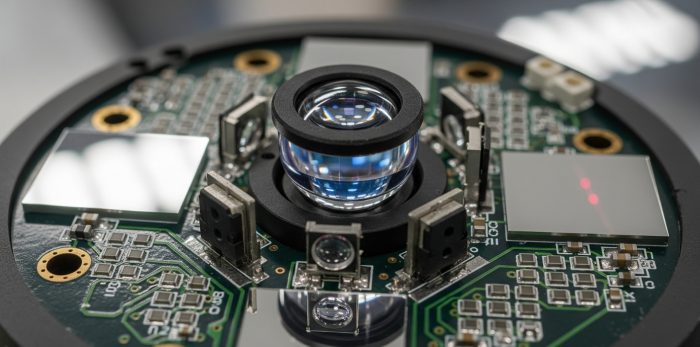Optical sensors, once confined to specialized research and niche industrial applications, are now embedded across sectors ranging from healthcare diagnostics to autonomous transportation. With advancements in photonics, miniaturization, and AI integration, the market is evolving into a key enabler of real-time, high-accuracy detection systems. But how is this transformation shaping market growth, competition, and technological breakthroughs?

Image Credit: Research Intelo
What is Driving the Current Momentum in Optical Sensing?
- Technologies in Consumer Electronics
Optical sensors are becoming integral to smartphones, tablets, wearables, and augmented reality devices, enabling advanced features such as facial recognition, gesture control, and health tracking. Advances in component miniaturization, coupled with greater accuracy and lower power consumption, have solidified their role as essential elements in portable electronic technologies. According to Research Intelo, rising consumer demand for biometric authentication and advanced imaging is a major catalyst for sensor innovation in this segment.
- Adoption of 3D Sensing Technologies
3D sensing in photoelectric sensors boosts object detection accuracy using methods like structured light, time-of-flight, and laser triangulation. Widely adopted in robotics, logistics, and automotive manufacturing, it enables precise shape and position measurement across industries.
- Demand for Optical Sensors in the Industrial and Automotive Sectors
In industry, optical sensors drive automation, safety, and quality control, with Industry 4.0 boosting the use of fiber optic and photoelectric types. In automotive, ADAS, autonomous driving, and in-cabin monitoring depend on them for precise detection and measurement, supporting strong market growth ahead. According to Research Intelo, automotive applications are set to record one of the highest CAGR rates in the optical sensor space through 2033.
Which Market Segments are Poised for the Most Significant Growth?
The market is broadly categorized by type, application, and end-user industry.
- By Type – Key technologies include image sensors, fiber optic sensors, and infrared sensors. Fiber optic sensors are increasingly adopted for their immunity to electromagnetic interference, high sensitivity, and durability in harsh environments, while image sensors lead the market, fueled by their extensive use in smartphones, digital cameras, and surveillance.
- By Application – Machine vision, temperature sensing, gesture recognition, and chemical detection are witnessing rapid demand.
- By End-user – Automotive, healthcare, industrial automation, consumer electronics, and aerospace are the primary adopters. The automotive sector, where optical sensors are used in ADAS, autonomous vehicles, in-cabin monitoring, and lighting systems, is expected to see sustained demand growth.
How are Technological Advancements Influencing Competitive Strategies?
Emerging trends such as 3D optical sensing, hyperspectral imaging, and integrated photonics are redefining product development strategies. Companies are investing in miniaturization to meet the size constraints of wearables and smartphones, while simultaneously improving sensitivity and energy efficiency.
Artificial intelligence and machine learning integration are enhancing the interpretive capabilities of optical sensors, enabling predictive maintenance in industrial settings and improving detection accuracy in healthcare diagnostics. Partnerships between semiconductor companies and optics specialists are further accelerating innovation cycles.
What is the Global Market Outlook?
According to the Research Intelo Report, the global optical sensor market was valued at USD 25.7 billion in 2024 and is projected to reach USD 59.5 billion by 2033, expanding at a CAGR of 9.8%. Asia-Pacific leads the market due to its dominance in consumer electronics manufacturing, while North America and Europe are focusing on high-end applications in defense, aerospace, and healthcare.
The rising deployment of optical sensors in autonomous vehicles, renewable energy monitoring, and smart infrastructure projects is expected to sustain long-term growth. Emerging economies are also increasing investment in photonics research and manufacturing capabilities, potentially shifting the competitive landscape.
What Challenges Could Reshape the Market Landscape?
While the outlook remains strong, the optical sensor market faces challenges from cost pressures and technical complexities. Producing high-performance sensors demands substantial investment in advanced materials, fabrication, and quality control. Price sensitivity, especially in consumer electronics and automotive sectors, can limit the adoption of premium solutions.
Moreover, issues in miniaturization, integration, and reliability must be overcome to meet the demands of advanced applications, requiring companies to balance innovation with cost efficiency and scalability to stay competitive.
Conclusion – Is the Future of Sensing Optical?
The trajectory of the optical sensor market suggests a growing role in enabling precision, efficiency, and intelligence across industries. With ongoing advances in miniaturization, integration with AI, and cost optimization, optical sensing is set to transition from a specialized component to a ubiquitous technology powering the connected and autonomous systems of tomorrow.